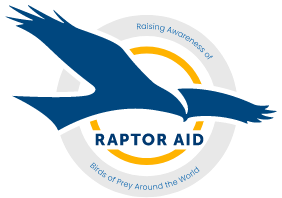The Law
As already stated in previous pages, you do not need a licence to own a bird of prey in captivity, BUT, you do need paperwork for some species to prove they have been lawfully captive bred.
These species are covered by CITES (Convention on Trade in Endangered Species) as ANNEX A species and should have some form of permanent identification, usually a closed ring or microchip. This will have a unique number that ties in with a document known as an Article 10. This article 10 also covers the bird for commercial use and includes future breeding.
There are some species on the ANNEX A list which are also known as Schedule 4 species. These have a blue document that must be registered to the individual owner and should be re-registered with any new owner (Like selling a car). Check out the scenario below...
Mr Jones has a captive bred pair of Barn owls in his garden in an aviary which he breeds from and sells their young. When the time comes, Mr Jones has 5 freshly hatched Barn owl chicks and as these are Annex A species he needs to apply for Article 10's in order to sell them. He places a solid closed metal ring on the leg of each chick with an individual number. This ring has to go on before the chicks get too big, so it can slide past the back toe/talon. Once all the chicks are rung, Mr Jones fills out an application form with the individual ring numbers in order to receive an Article 10 for each Barn Owl chick. When the Article 10's arrive, Mr Jones will check the information and ring numbers are correct and can now legally sell each chick with the correct Article 10. This paperwork must stay with the bird for life, but any new owners do not have to register the bird.
If Mr Jones were to breed Golden eagles, he would follow the same process, but these birds would also come with another document as they are classed as a Schedule 4 species. This blue document is so that any new owner must register their ownership of this bird to the government department who oversee licensing. The idea of some species being registered and others not needing certain paper work is based on whether they are found within the EU and their rarity status.
A good example of this is the Harris Hawk, probably now the most common bird of prey, kept in captivity within the UK. Because it is not classed as a rare or endangered species and within the EU, a Harris Hawk does not need any form of physical identification or paperwork. There are several other species that this applies to.
You can find out more about the law on registering birds of prey here and here. Other laws relating to falconry include the game season and when you can and can't hunt certain prey species, including not hunting on Sundays. You can find out a lot more on this here. Some species of birds that falconers wish to hunt may need a General license. You can read more about general licenses for hunting at the above link and to find out more click here. If, as a falconer, you are in any doubt about the law, we recommend you get in touch with your club rep or join a falconry club for support. If, as a member of the public, you are not sure about a falconer's actions, you can get in touch with us to discuss things further.

